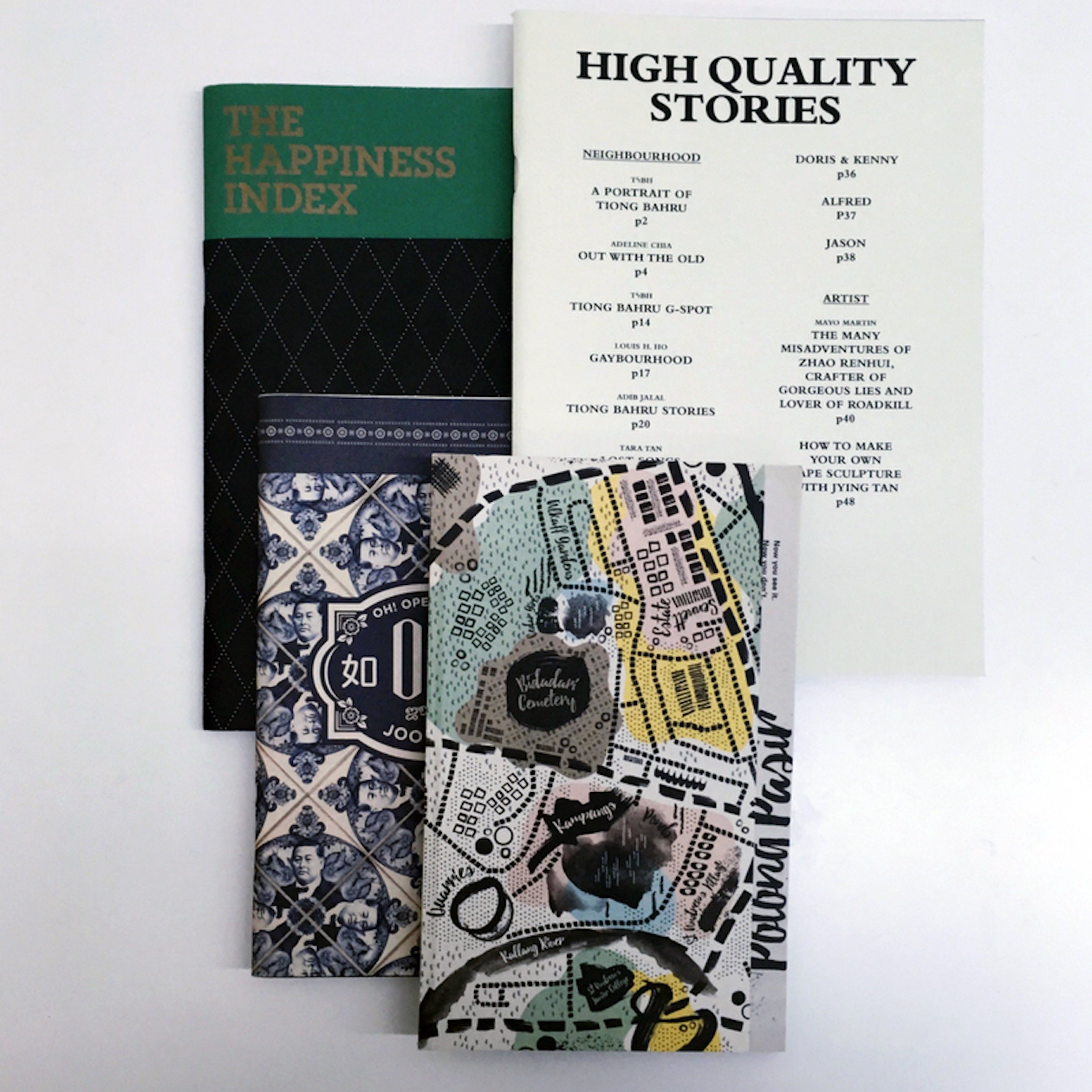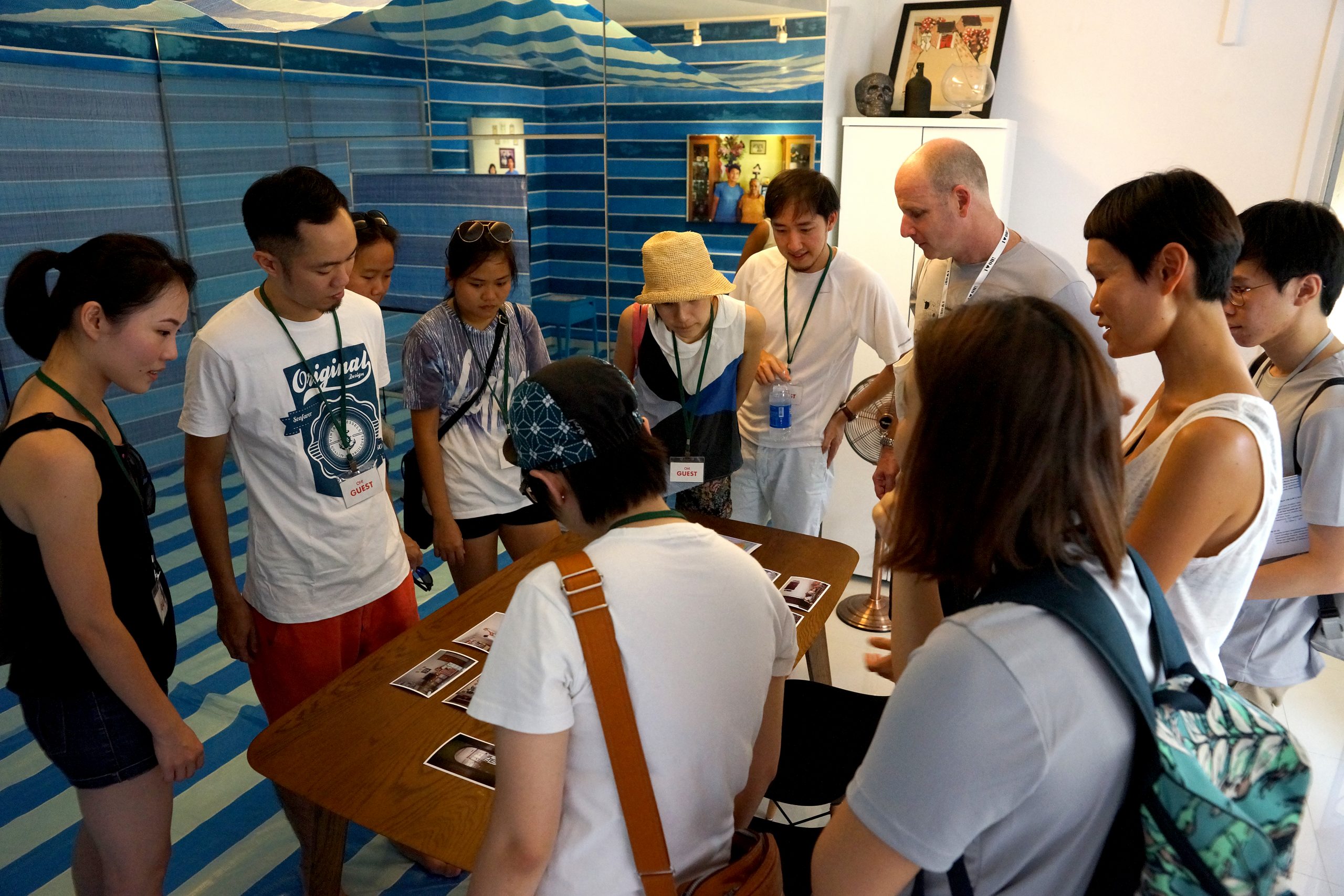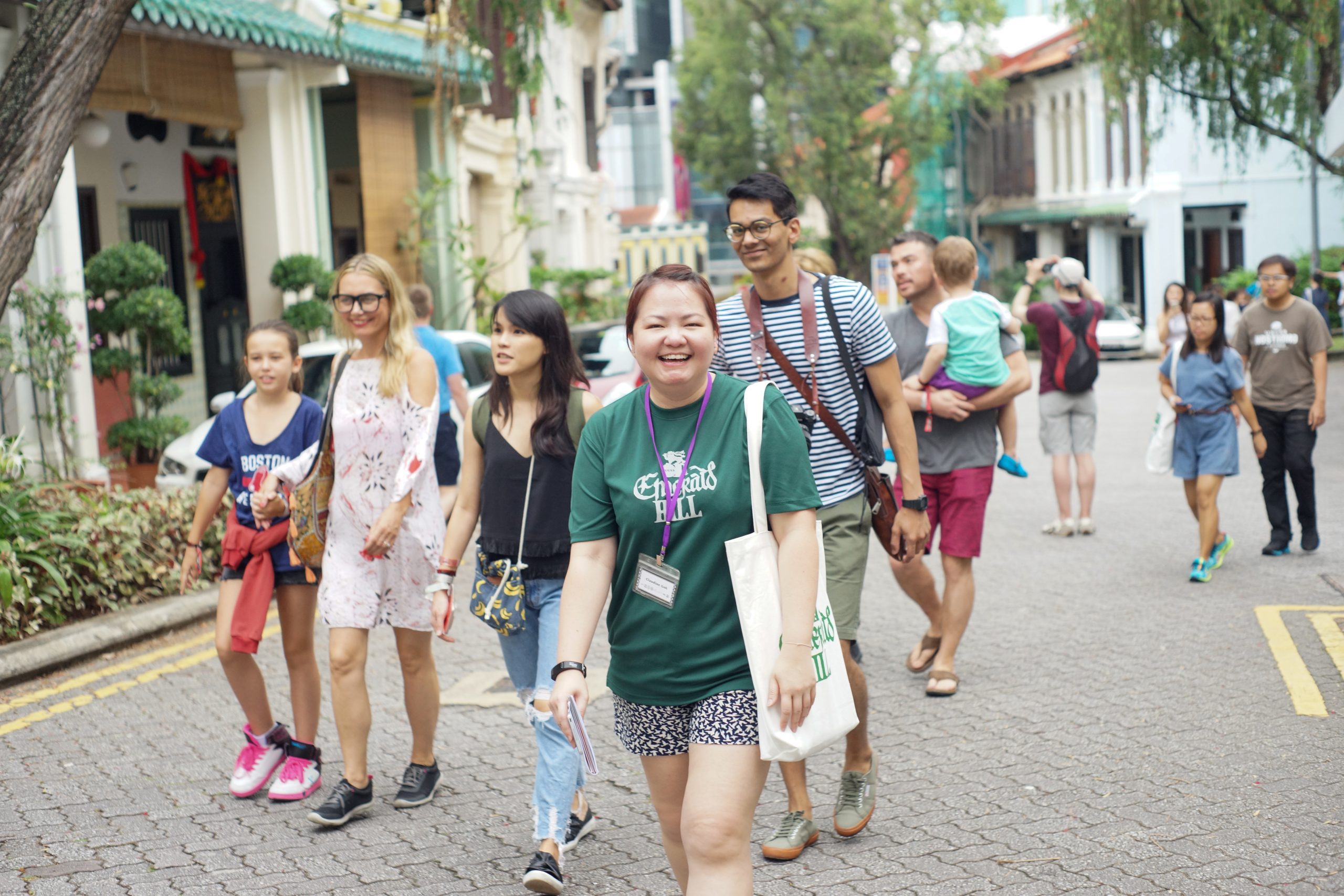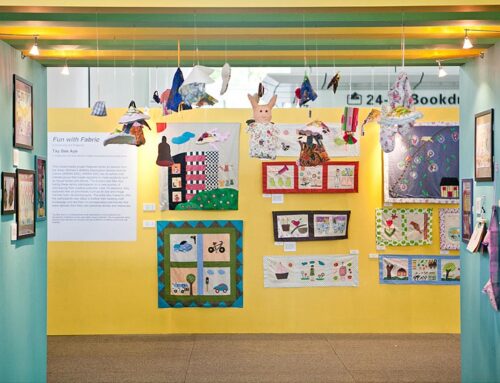Library / Field Studies
How to Place a Community – OH! Artwalks as Creative Placemaking?
Library / Field Studies
How to Place a Community – OH! Artwalks as Creative Placemaking?
I first witnessed OH! Open House (OH!) shift its focus in Tiong Bahru (2012), from mere artwalk to cultural geography. Cultural geography is the practice of “examining [people’s] cultural values, practices… and how people make sense of place”. [1] Since then, OH! has made a name by seeking out dominant narratives of neighbourhoods and re-writing them, using the power of art. OH! is not alone; other recent independent ad-hoc projects include Lucy Davis’ Railtrack Songmaps Roosting Post 1, a creative intervention at Tanglin Halt exploring relations between people and birds along its rail tracks. But OH! is one of the few, if not the only, organisations that brings guests to explore different neighbourhoods across Singapore while bridging the worlds of art and heritage.
I first came across the term “placemaking” two years ago, at a Singapore International Foundation (SIF) forum discussing case studies on creative intervention in communities. Revisiting this concept with ArtsWok, I wondered – what does “placemaking” mean? And is what we do at OH! “placemaking”?
Defining “Place”
Multiple definitions of “place” exist. Ask the average person, and a “place” might be rooted in its physicality, its inhabitants and their relationships to the space. Academics Brenda Yeoh and Lily Kong take it a step further; [2] a “location of collective experiences” linked to “the lives, movements and activities of individuals” and social constructions put in place by those in power – planners, administrators, politicians etc. “Place” is connected to time too – its passage, being “in” and moving “through” time, and “experiencing changing places”. Interpreting and reacting to places involves “understanding the human legacies of the past”.
Basically, “place” is more complex than we might first think.
More conventionally, “placemaking” is seen as something more permanent rather than temporary. But if, as Janet Pillai sees it, “placemaking” contemplates “community building and cultural adaptation as a creative act, and the creative act as indispensable to community building and cultural adaptation”, can something transient qualify as “placemaking”?
“Can something transient qualify as ‘placemaking’?”
OH! History
If you are new to OH!, picture this. A team scouts potential neighbourhoods – poring over research material, talking to homeowners, learning stories. Homeowners agree to open homes to artworks and visitors. Artists meet homeowners and respond to their stories and space. An army of volunteers descends upon the neighbourhood; we teach them about its history, residents, and the artworks. Volunteers then guide guests on artwalks doubling up as exercises of cultural geography, the group weaving its way into people’s homes and other private spaces such as schools and temples. Over successive weekends, these worlds collide intensely, providing unique experiences for everyone involved. What started out in 2009 as challenging viewers’ expectations of art beyond the museum, the white cube, has evolved into something more personal – a meditation of “place” in the swiftly changing environment of Singapore.
An early highlight was the publication High Quality Stories accompanying our Tiong Bahru artwalks, featuring articles exploring the neighbourhood in-depth. For instance, Adeline Chia approached various shops plying their trade in Tiong Bahru – including Yong Huat, a furniture rehabilitation centre dating back to 1969. Since Tiong Bahru was in the midst of gentrification – a fertile environment for intersecting “place” and time and exploring nostalgia – the publication became an invaluable documentation of “place” not just for residents, but also for outsiders curious about Tiong Bahru. Galvanised by its positive reception, we have continued producing similar accompanying publications for subsequent neighbourhoods.

Bringing Communities Closer
Through Hello! Joo Chiat, a free public programme running concurrently with OH! Joo Chiat (2015), local residents conducted fringe activities and pop-up exhibitions, facilitated by OH!, at local shops for one month. Our first major public installation by Randy Chan, Fiona Tan and Zenas Deng was an 8-metre long rescue boat that housed precious objects belonging to inhabitants of the Koon Seng area – sharing the memories of the residents through a community museum. Placing together multiple objects, previously disparate, started a conversation about their owners in the context of the community’s history. Joo Chiat warmly welcomed us, and some residents who attended the artwalks enjoyed their experience so much so that they became our future volunteers!

OH! Potong Pasir (2016) became more intimate as the neighbourhood changed before our eyes – from opposition ward to PAP ward, unravelling the hitherto undiscussed restrictions placed on residents for voting for the opposition. Through his installation Blue Canvas Walls, artist Hafiz Osman documented going door-to-door in an HDB block, offering to repaint walls in a colour of the homeowner’s choosing, and the relationships formed with these homeowners. Robert Zhao’s immersive archive titled All the Pictures of a Man, consisted of then-75-year-old Uncle Lee’s photographs, letters, instruction manuals and boarding passes, which brought viewers into Uncle Lee’s life. Uncle Lee was also present to talk to almost every tour group! Guests could slip into his skin, and into the community.

Growing Roots
Through sustained creative interventions in storied neighbourhoods across Singapore, OH! helps bridge the gap between the rootless and their need to seek roots. As Shindee Liew, a homeowner for OH! Holland Village and a return volunteer guide and guest for OH! Emerald Hill, recalls, “[my experience] gave me a new appreciation on how you could promote art to different audiences. It is the stories convincingly told which bring these artworks and our neighbourhoods to life.”
Indeed OH! offers guests unique vantage points of multiple histories, an understanding of “collective experiences” transposed against the dominant narrative (OH! Potong Pasir), documentations of the intersection of “place” and time (OH! Tiong Bahru), and tools indispensable to community building and cultural adaptation (OH! Joo Chiat).

Final Thoughts
In revisiting “place” and “placemaking”, does it matter whether the creative act is temporary (e.g. art installations) or permanent (e.g. our various publications)? Perhaps not. Any creative intervention contributes to community building and cultural adaptation, the difference being the eventual impact on the community’s stakeholders. OH!’s community of homeowners, volunteers, artists and guests continues to grow, not just in numbers but emotional investment in the neighbourhoods they interact with and Singapore as a whole.
Freed of conventional expectations of “placemaking”, perhaps we can open ourselves to multiple solutions, thereby strengthening communities and “place” across Singapore.
All images courtesy of OH! Open House.
[1] N. Castree, R. Kitchin, & A. Rogers (2013). “Cultural geography,” A Dictionary of Human Geography: Oxford University Press.
[2] Brenda S. A. Yeoh & Lily Kong (1996). “The Notion of Place in the Construction of History, Nostalgia and Heritage in Singapore,” Singapore Journal of Tropical Geography, 17(1), 52-65.
About OH! Open House
OH! Open House is a non-profit organisation that tells alternative stories of Singapore through art.
Singapore’s calendar is marked by many significant dates, each filled with stories to uncover. In August, OH! is launching Singapore Calendar, a programme which explores how we mark these occasions with different thoughts and traditions. Join us as we kick off our first edition with artist Eugene Tan as he explores the Hungry Ghost Festival. To stay up to date, sign up for OH!’s mailing list at ohopenhouse.org.
About the writer
ZAKI JUMAHRI is a lawyer by training and curatorial intern at OH! Open House. His research interest in Southeast Asian art was fuelled by his recent studies in the Postgraduate Diploma in Asian Art programme in SOAS, University of London.







